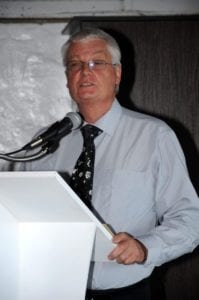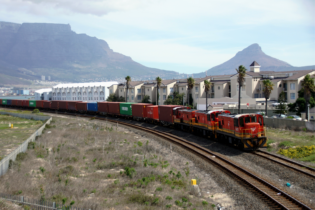The focus going forward for FESARTA is to ensure the future sustainability of the association.
Up until now, Barney (Curtis) has been FESARTA. He’s kept it together and developed and maintained its credibility, which has been crucial. The association needed that credibility because, without it, it couldn’t have done the things it did, nor what it still aims to do. The new FESARTA office will be ready early next year and will be based in Port Elizabeth, but we will still maintain a presence in Gauteng by way of a monthly 3-5 day visit, depending on workload. Apart from administrative work, the association has, in the interim, been dealing with non-tariff barriers and a range of other issues affecting different countries. SADC has now officially recognised the new FESARTA administration. Another regional transport association has been created in East Africa based in Nairobi – FEARTA – but it is not recognised by the Sub-Saharan Africa Transport Programme, which is mandated to work through FESARTA. As I write this, the association is focusing its attention on attracting corporate membership. A major logistics service provider is already on board. But we are not only looking at logistics service providers; we want to attract all heavy commercial vehicle manufacturers selling vehicles in Africa. Barney has done some groundwork on this already. Corporates will benefit from membership of FESARTA in a number of ways. Their logo, with a company description, will appear on the home page of the FESARTA website. The member’s logo will be used on marketing material for the 2016 Road Transport Forum and they will have a voice at regional forums, attended by FESARTA’s National Road Transport Association (NRTA) members. These members will have direct access to the NRTAs and their road transport members in East and Southern Africa, and will have access to our contacts database. They will also have access to the Corridor Information Platform, which includes information about corridor transit times, border post crossing times, port loading times, and corridor bottlenecks. Members will receive relevant information on regional road transport, including updated schedules on vehicle load limits and dimensions, regional forums, business opportunities, and important projects. Their views on changing or preventing change to legislation at a regional level in East and Southern Africa will be heard.Information will be disseminated to all members’ subsidiaries and their dealers, and help will be provided to solve problems faced by transporters, importers/exporters, and freight forwarders along corridors in East and Southern Africa.
They will receive a discounted subscription to Transport World Africa magazine and a free copy of the East and Southern African Road Transport Corridor Handbook. Membership will complement affiliations or other working relationships that the member may already have with relevant NRTAs in their respective country. NRTA membership provides members with information and services pertaining to its country, with FESARTA membership extending that offering to the East and Southern African region as a whole. Before it closed, Trademark South Africa (TMSA), in association with Comesa and Crickmay, operated a GPS system that monitored cross-border transit times. When TMSA closed, the project was decommissioned. We believe that FESARTA should recommission this project. Our intention is to expand it so that we cover the Walvis Bay Corridor Group; MCLI; the Beira, Dar, and central corridors; and the Northern Corridor, from Mombasa, through Uganda and into Rwanda. We want to develop a secure, subscriber-based database for the entire Southern and East Africa region, which will document dwell times at ports, corridor travelling times, and delays at border posts. In fact, the goal is to provide just about any information on any corridor in Southern and East Africa – from the port through to final destination. This will be made available to anyone, subject to an affordable fee, which is yet to be established. I’m hoping that we can develop this system further, possibly on to an Android or similar platform, to allow full mobile access. This will give drivers the opportunity to post comments should they come across something troublesome or unexpected on their journeys. We want people to be able to contribute and share information, to the benefit of all. Last, but not least, is the trucker’s forum, which we plan to have in Johannesburg, in 2016. We would like to extend these forums to other regions as well and there is the possibility that we could have one of these in Nairobi or Mombasa, subject to securing necessary sponsorships and the like.







